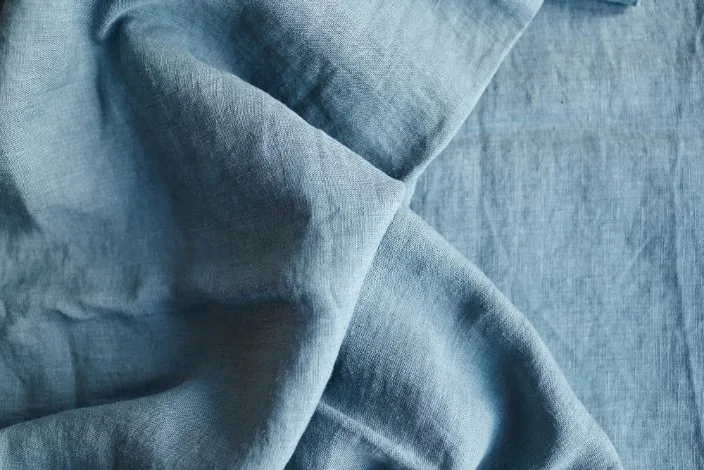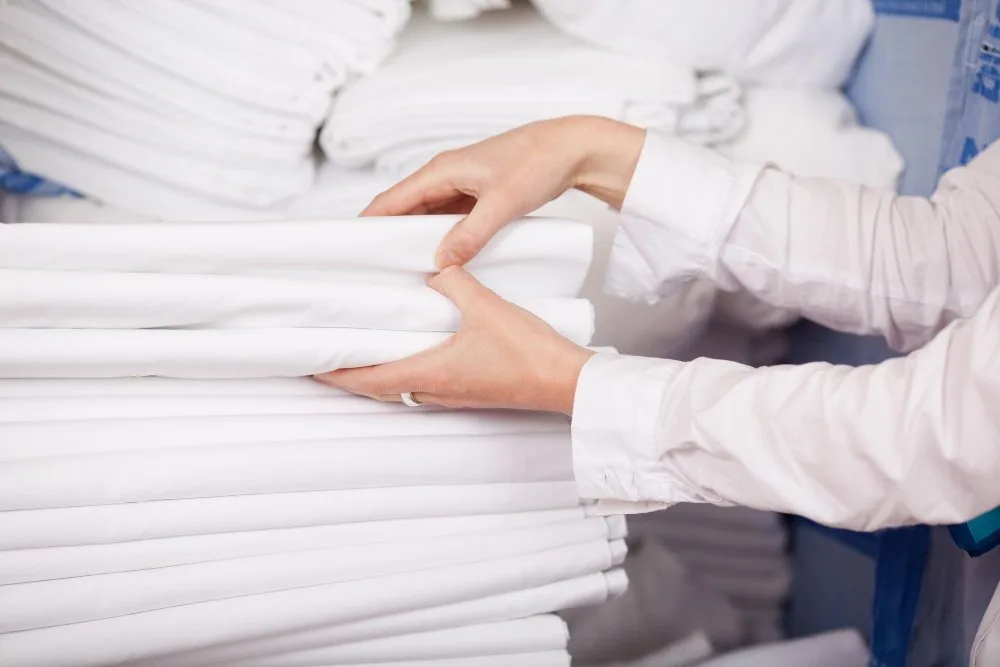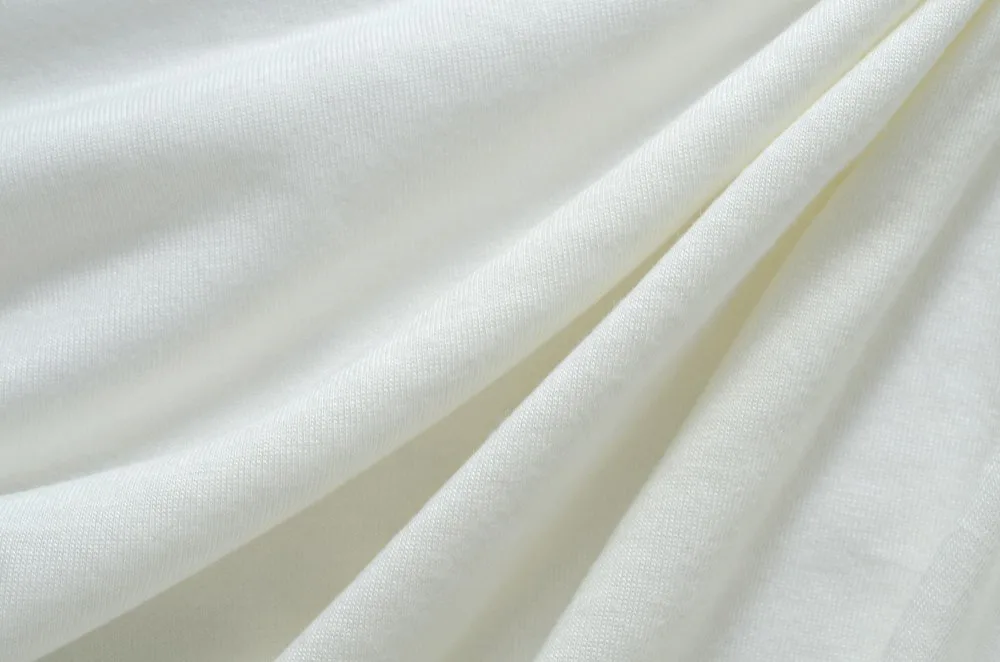Everything you need to know before investing in soft, breathable stonewashed linen sheets
Table of Contents
- What is Stonewashed Linen?
- How Stonewashed Linen is Made
- Benefits of Stonewashed Linen Bedding
- Honest Drawbacks to Consider
- Stonewashed vs. Regular Linen
- Quality Certifications You Should Know
- How to Choose Quality Stonewashed Linen
- Caring for Your Stonewashed Linen
- Is Stonewashed Linen Right for You?
- How to Stonewash Linen at Home
- Sustainability and Environmental Impact
- Frequently Asked Questions
- Final Thoughts
Quick Takeaways
- Stonewashed linen is pre-washed with volcanic stones or pumice to make it soft from day one
- You’ll enjoy immediate comfort without the typical 6-10 wash break-in period
- The process creates a relaxed, lived-in look with natural wrinkles
- Quality matters—cheap stonewashed linen can have tears from improper washing
- Look for OEKO-TEX or GOTS certification for safety and quality
- Expect to pay $180-$300 for a quality queen set
- Best for hot sleepers, people with allergies, and those who love low-maintenance bedding
What is Stonewashed Linen?
If you’ve ever bought new sheets only to find them scratchy and stiff for the first few weeks, you’ll understand why stonewashed linen has become so popular. This special type of linen fabric goes through an extra step during production that makes it feel soft and comfortable right out of the package.
Regular linen starts out crisp and gets softer over time. Stonewashed linen skips the waiting period. Manufacturers put the fabric through large industrial washing machines filled with volcanic stones or pumice rocks. As the machine tumbles, these stones gently beat and rub against the fibers, loosening the weave and creating that broken-in texture you’d normally get after months of use.
The result? Sheets that feel like they’ve been your favorite for years, even on your first night. The fabric develops a slightly faded, vintage look with soft natural wrinkles that many people find more appealing than the stiff, formal appearance of untreated linen.
How Stonewashed Linen is Made
Understanding the manufacturing process helps you make better buying decisions. Here’s what happens to turn regular linen sheeting into the soft stonewashed variety you see in stores.
The Traditional Stone Washing Process
After the linen fabric is woven from flax fibers, it goes into massive industrial washing machines. Workers add pumice stones—the same lightweight volcanic rock you might use to smooth your feet. These stones come in different sizes depending on how soft the manufacturer wants the final product to be.
The machine runs for 2-3 wash cycles, with the stones constantly tumbling against the fabric. This friction does several things:
- Breaks down the stiff pectin that naturally coats flax fibers
- Loosens the tight weave of new linen
- Creates tiny distressed spots that give the fabric character
- Slightly fades the color for a vintage look
Important: The stone washing process can damage fabric if done incorrectly. Too many stones, too many cycles, or stones that are too large can cause tears, rips, and fraying. This is why buying from reputable manufacturers matters—they have quality control checks to catch damaged fabric before it becomes bedding.
Enzyme Washing: A Modern Alternative
Some manufacturers now use enzyme washing instead of actual stones. This chemical process uses special enzymes to break down the same fibers that stones would target. The advantage? You get the same soft feel and relaxed look without the risk of physical damage to the fabric.
Enzyme-washed linen typically lasts longer than stone-washed because the fabric hasn’t been physically abraded. However, both methods produce similar results in terms of softness and appearance.
Benefits of Stonewashed Linen Bedding
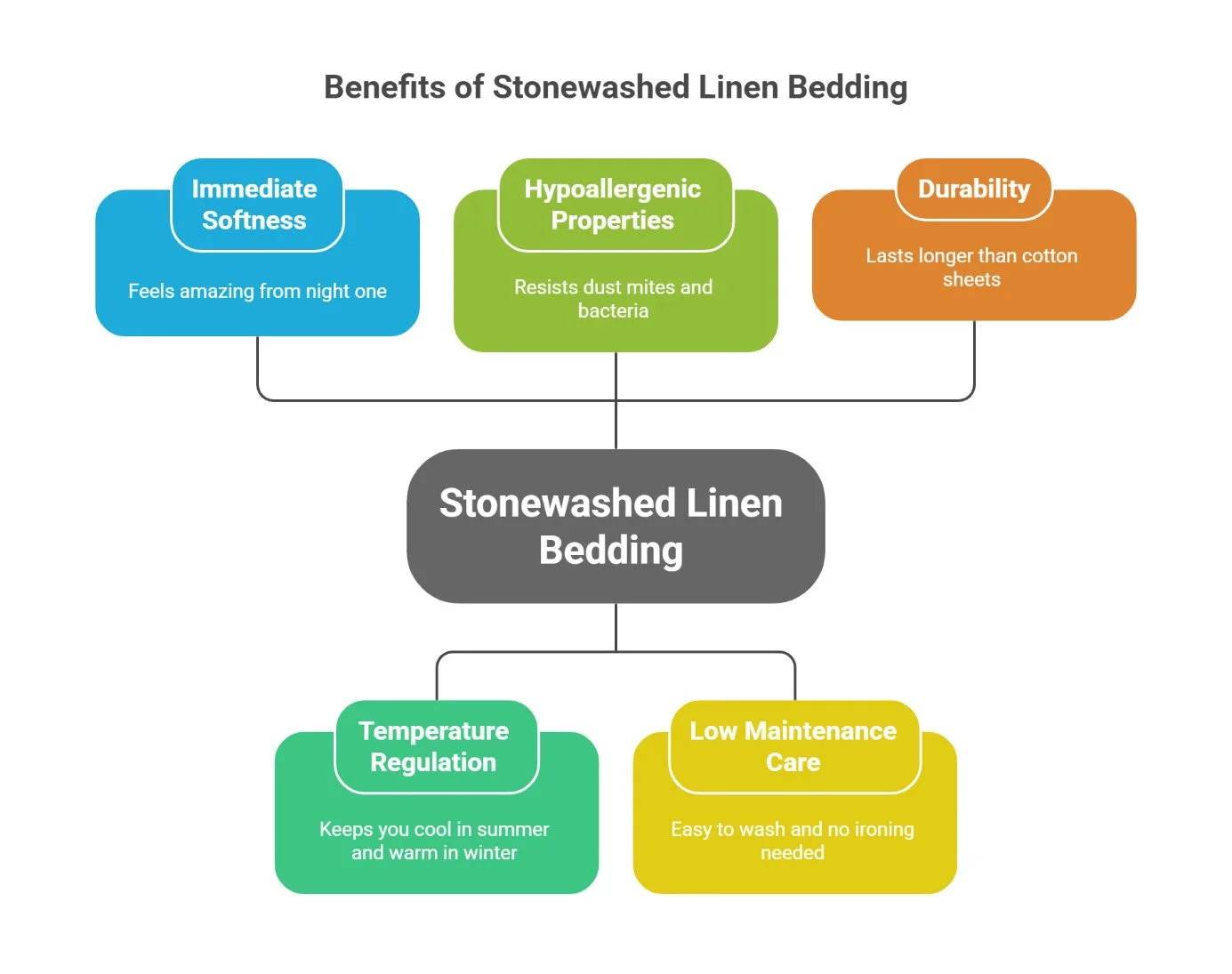
Let’s talk about why you might want to invest in stonewashed linen sheets. These benefits go beyond just feeling soft.
Immediate Softness You’ll Notice Right Away
The biggest advantage is obvious: your sheets feel amazing from night one. While regular linen needs 6-10 washes to soften up, stonewashed linen has already gone through that process. If you hate the feeling of stiff, scratchy sheets, this alone might be worth the extra cost.
Temperature Regulation for Better Sleep
If you’re someone who wakes up sweaty or kicks off the covers at 2 AM, linen’s natural breathability helps a lot. The fabric has a loose weave that lets air flow freely around your body. According to the Sleep Foundation, maintaining proper bedroom temperature and using breathable bedding can significantly improve sleep quality. Linen pulls moisture away from your skin faster than cotton, which keeps you dry even on humid nights.
Interestingly, linen works in both hot and cold weather. In summer, it keeps you cool. In winter, it traps just enough warmth without making you overheat. This makes it a good year-round choice if you don’t want to switch out your bedding with the seasons.
Hypoallergenic Properties
Linen naturally resists dust mites, mold, and bacteria. The fibers don’t create static, so they don’t attract dust the way synthetic fabrics do. If you have allergies, eczema, or sensitive skin, you’ll probably find linen more comfortable than cotton or polyester blends.
Low Maintenance Care
Here’s something you might not expect: stonewashed linen actually gets easier to care for over time. The pre-washing means it won’t shrink much in your home washing machine. The natural wrinkles are part of the look, so you never need to iron unless you really want to.
You can machine wash in cold water and either air dry or tumble dry on low. No special treatment needed.
Durability That Pays Off
Quality stonewashed linen sheets typically last 7-10 years with proper care. That’s significantly longer than cotton sheets, which usually need replacing every 2-3 years. While you’ll pay more upfront ($180-$300 for a queen set versus $80-$150 for cotton), the longer lifespan often makes it a better value over time.
Honest Drawbacks to Consider
Before you buy, you should know about some real downsides to stonewashed linen. Not every article mentions these, but they matter for your decision.
What You’ll Love
- Soft from the first use
- Gets even softer over time
- Keeps you cool in summer
- Naturally hypoallergenic
- Low maintenance
- Lasts for years
- Relaxed, casual look
Potential Downsides
- Higher initial cost ($180-$300+)
- Risk of tears if poorly made
- May wear out faster than regular linen
- Always looks wrinkled
- 22% pilling rate after 3+ years
- Limited color options
- Not ideal if you prefer crisp sheets
The Quality Control Problem
Not all stonewashed linen is created equal. The washing process can damage fabric if the manufacturer uses too many stones, runs too many cycles, or doesn’t inspect the results carefully. Cheap stonewashed linen might arrive with:
- Small tears along the edges
- Fraying seams
- Thin spots that will wear through quickly
- Uneven fading or discoloration
This is why the cheapest option often isn’t the best value. Always check the return policy and read reviews before buying.
Shorter Lifespan Than Regular Linen
Because the stone washing process physically breaks down the fibers, stonewashed linen may not last quite as long as untreated linen. Regular linen can last 10-15 years. Stonewashed typically makes it 7-10 years. It’s still durable, but the trade-off for that immediate softness is a slightly shorter life.
The Wrinkles Are Permanent
If you love the crisp, smooth look of hotel sheets, stonewashed linen probably isn’t for you. The relaxed, crumpled appearance is part of the style. You can iron it if you want, but the wrinkles come back as soon as you sit on the bed. Some people love this casual, lived-in look. Others find it sloppy.
Stonewashed vs. Regular Linen: Which Should You Choose?
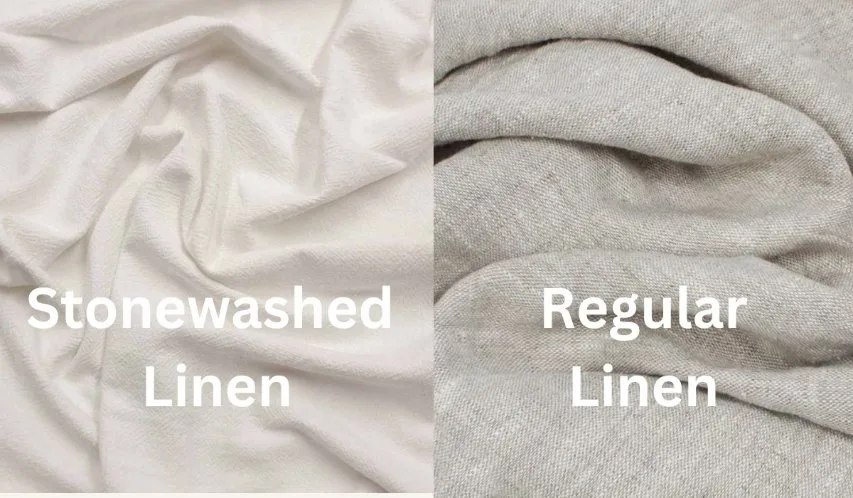
If you’re deciding between stonewashed and regular linen, here’s how they compare in real-world use.
| Feature | Stonewashed Linen | Regular Linen |
|---|---|---|
| Initial Feel | Soft and broken-in immediately | Crisp and stiff |
| Break-In Time | None—ready from day one | 6-10 washes to soften |
| Appearance | Relaxed with natural wrinkles | Smooth and formal |
| Durability | 7-10 years | 10-15 years |
| Price (Queen Set) | $180-$300 | $150-$250 |
| Shrinkage Risk | Minimal (pre-shrunk) | 3-5% possible on first wash |
| Color Options | Usually neutral, slightly faded | Vibrant colors available |
| Best For | Immediate comfort, casual style | Traditional look, maximum durability |
Quick Decision Guide: Choose stonewashed if you want soft sheets immediately and love a relaxed look. Choose regular linen if you prefer crisp sheets, want maximum durability, and don’t mind a break-in period.
Quality Certifications You Should Know
When you’re spending $200+ on sheets, you want to know they’re safe and well-made. These certifications help you identify quality products:
OEKO-TEX Standard 100
This certification from the OEKO-TEX Association means the fabric has been tested for over 1,000 harmful substances including heavy metals, pesticides, and formaldehyde. Every component—fabric, thread, buttons, zippers—passes safety tests.
Why it matters: Your skin touches these sheets for 6-8 hours every night. OEKO-TEX ensures they’re free from chemicals that could cause irritation or health problems.
GOTS (Global Organic Textile Standard)
This is the gold standard for organic textiles. The Global Organic Textile Standard certifies that at least 70% of the fibers are organic, grown without synthetic pesticides or GMOs. It also ensures fair labor practices and environmental responsibility throughout production.
Why it matters: GOTS covers the entire supply chain from farm to finished product, not just the end result.
European Flax
This label confirms the linen was made from flax grown in France, Belgium, or the Netherlands. These regions produce the highest quality flax because of their climate and centuries of expertise.
Why it matters: European flax is grown with minimal irrigation and no pesticides. The quality is consistently better than flax from other regions.
Pro Tip: The best stonewashed linen bedding carries both OEKO-TEX (for safety) and European Flax (for quality). If you see GOTS certification too, that’s even better—though true organic linen is rare and expensive.
How to Choose Quality Stonewashed Linen
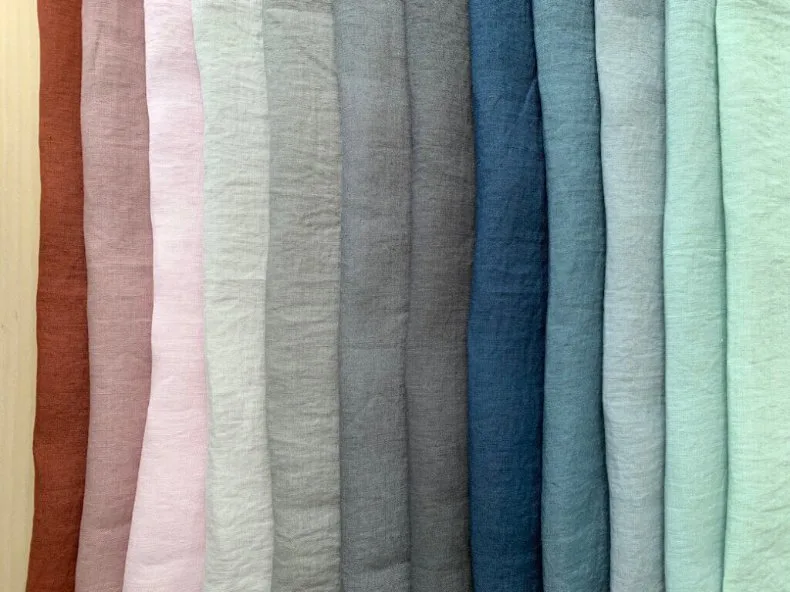
Not all stonewashed linen sheets are worth buying. Here’s what to look for when shopping:
Understanding GSM (Grams Per Square Meter)
GSM measures fabric weight. For linen sheets, look for 175-180 GSM. This provides a good balance between durability and breathability. Lower GSM (under 150) feels too thin and may tear easily. Higher GSM (over 200) feels heavy and hot.
Important: Thread count doesn’t matter much for linen. Because flax fibers are thicker than cotton, linen naturally has a lower thread count (around 50-80). Don’t let marketers trick you with high thread count claims.
Red Flags to Avoid
- Very low prices: If it’s significantly cheaper than $150 for a queen set, the quality is probably compromised
- Vague descriptions: “Linen blend” or “linen-like” means it’s not 100% linen
- No country of origin: Reputable brands clearly state where the fabric is made
- No certifications: At this price point, there’s no excuse for skipping safety testing
- Only one review source: Check multiple sites, not just the brand’s website
Where the Linen Is Made Matters
Here’s something many sellers don’t tell you: “French linen” often just means the flax was grown in France. The fabric might have been spun and woven in Asia where labor is cheaper but quality control is inconsistent.
True European linen goes through every production step—growing, spinning, weaving, and finishing—in Europe. This costs more, but the quality difference is real. European manufacturers have centuries of expertise and stricter standards.
If the price seems too good to be true for “European linen,” it probably is. Quality European stonewashed linen can’t be produced cheaply.
Caring for Your Stonewashed Linen
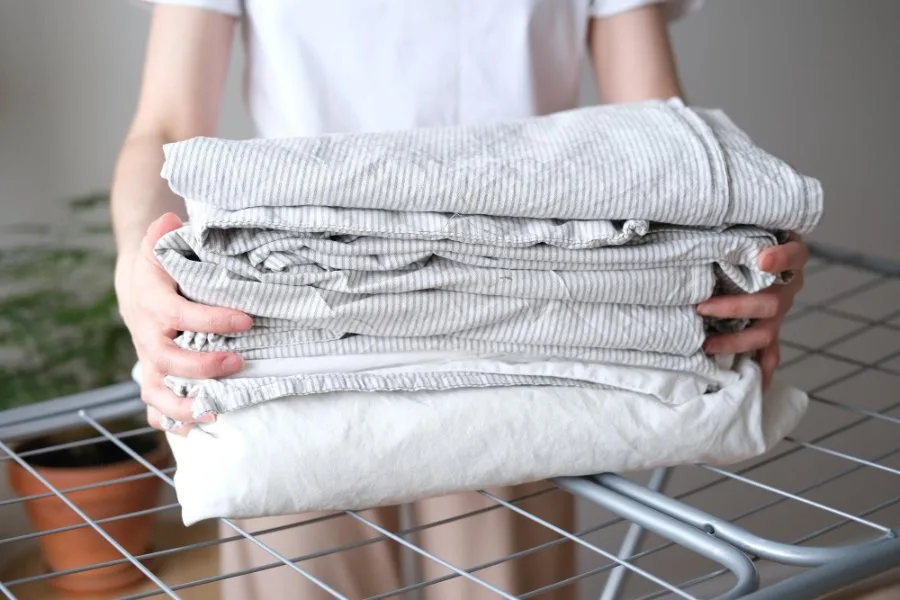
Good news: stonewashed linen is easy to care for. Follow these simple steps to make your sheets last.
Washing Instructions
- Temperature: Wash in cold or lukewarm water (max 100°F/40°C)
- Detergent: Use mild liquid detergent without phosphates or bleach
- Cycle: Gentle or delicate cycle works best
- Colors: Wash dark and light colors separately, especially for the first few washes
- Load size: Don’t overstuff the machine—linen needs room to move
Drying Tips
- Air drying: Hang in shade to prevent fading and maintain elasticity
- Machine drying: Use low heat and remove promptly to minimize wrinkles
- Avoid fabric softener: It coats the fibers and reduces breathability
Storage and Maintenance
Store your linen in breathable cotton bags, not plastic. Rotate between multiple sets if you have them—this distributes wear and helps sheets last longer. If you notice a small tear, repair it immediately. Linen is strong, but once a thread breaks, the damage can spread.
For more detailed fabric care guidance, check out our linen care tools that help you create custom washing schedules.
Is Stonewashed Linen Right for You?
Let’s get practical. Here’s who benefits most from stonewashed linen sheets:
You’ll Love Stonewashed Linen If You:
- Sleep hot: The breathability and moisture-wicking keep you cool and dry
- Live in a humid climate: Linen handles moisture better than any other natural fiber
- Have allergies or sensitive skin: The hypoallergenic properties and lack of chemical treatments make a real difference
- Want low-maintenance bedding: Machine washable, no ironing needed, improves with age
- Prefer casual style: The relaxed, lived-in look fits modern, laid-back decor
- Think long-term value: Yes, it costs more, but 7-10 years of use makes the per-night cost reasonable
Consider Other Options If You:
- Prefer crisp, smooth sheets: The permanent wrinkles might bother you—try sateen cotton instead
- Love vibrant colors: Stonewashed linen typically comes in muted, neutral tones
- Have a tight budget: $180-$300 is a lot if you’re watching expenses—regular cotton works fine
- Want formal bedding: The casual look doesn’t suit traditional or formal bedrooms
- Sleep cold: While linen provides warmth, flannel or heavy cotton might be cozier
How to Stonewash Linen at Home
If you already own regular linen sheets and want to soften them up, you can try a DIY version of stonewashing. Fair warning: this won’t produce professional results, and there’s some risk of damage. But it costs almost nothing to try.
Materials You’ll Need:
- 4-6 clean tennis balls or dryer balls
- Your linen sheets
- Mild detergent
- Your washing machine and dryer
Step-by-Step Process:
- Pre-wash: Wash the linen sheets once normally to remove any sizing or treatments
- Load the machine: Put sheets in your washing machine with 4-6 tennis balls
- Add detergent: Use half the normal amount of mild detergent
- Run the cycle: Use warm water (not hot) and a normal wash cycle
- Dry with balls: Transfer everything to the dryer and dry on medium heat with the tennis balls
- Repeat: Do this 2-3 more times over several days
Important Safety Notes: This method won’t damage most linen, but check for loose threads or weak spots after each cycle. Stop if you notice any tears. The results won’t match professional stonewashing—you’ll get some softness but not the same worn-in texture or vintage appearance.
For better results, some people add a cup of white vinegar to the rinse cycle. The acid helps break down the pectin coating on linen fibers. Never use bleach—it weakens linen and causes yellowing over time.
Sustainability and Environmental Impact
If you care about the environment, linen is one of your best choices. Here’s why:
Flax Growing Benefits
- No irrigation needed: European flax grows on rainfall alone in most regions
- No pesticides: The plant naturally resists pests and doesn’t need chemical treatments
- No GMOs: Traditional flax varieties work fine; no genetic modification needed
- Every part gets used: Linen comes from the fibers, linseed oil comes from the seeds, and the rest becomes animal feed or industrial products
- Low carbon footprint: Flax absorbs more CO2 during growth than cotton and requires less processing
Production Impact
European linen production uses 100% mechanical processes to extract fibers from flax stalks. This creates zero waste during extraction. Compare this to cotton, which requires significant water, pesticides, and chemical processing.
The stonewashing process itself uses water, but enzyme washing (increasingly common) reduces water consumption. When you choose brands with GOTS certification, you’re supporting manufacturers who treat wastewater and follow strict environmental standards.
End of Life
Unlike synthetic fabrics like polyester satin that sit in landfills for decades, linen is 100% biodegradable. When your sheets finally wear out after 7-10 years, they’ll decompose naturally. You can even compost them or use them as cleaning rags.
Frequently Asked Questions
Yes, stonewashed linen is very soft—much softer than regular linen. The stone washing process breaks down the stiff pectin coating on flax fibers and loosens the weave, creating a buttery-soft texture from day one. It continues getting softer with each wash, developing a personalized drape over time.
Stonewashed linen has minimal shrinkage—typically less than 2-3%—because it’s already been pre-shrunk during the stonewashing process. Regular linen can shrink 3-5% on the first wash. To be safe, follow care instructions: wash in cold or lukewarm water and avoid high heat in the dryer.
Most people find stonewashed sheets very comfortable because they’re soft without feeling slippery, breathable without being cold, and textured without being rough. They work especially well for hot sleepers and people with sensitive skin. The relaxed, slightly wrinkled appearance might not suit everyone’s style preferences, but the physical comfort is rarely an issue.
Stonewashed linen is good if you want immediate softness, natural temperature regulation, and low-maintenance bedding. It’s better than regular linen for instant comfort but may not last quite as long (7-10 years vs. 10-15 years). The quality depends heavily on the manufacturer—well-made stonewashed linen from reputable brands is worth the investment, while cheap versions may have tears and thin spots.
Stonewashed linen is more breathable than cotton, lasts longer (7-10 years vs. 2-3 years), and requires less care. Cotton feels softer initially, comes in more colors, and costs less ($80-$150 vs. $180-$300 for a queen set). Linen stays cooler in summer but cotton might feel cozier in winter. Choose based on your priorities: linen for durability and temperature control, cotton for budget and variety.
You can iron stonewashed linen if you want, but it’s not necessary and the wrinkles return quickly. If you do iron, use medium heat while the fabric is slightly damp. Most people embrace the natural wrinkled look as part of the fabric’s casual charm. If wrinkle-free sheets are important to you, consider plain weave linen or cotton instead.
Enzyme-washed linen uses chemical enzymes to break down fibers, while stone-washed uses physical abrasion from pumice rocks. Both create similar softness and appearance, but enzyme-washed linen typically lasts longer because there’s no physical damage to the fabric. Some people prefer stone-washing for the authentic vintage effect. Both methods produce similar end results in terms of comfort.
Look for brands that clearly state “100% European Linen” or “French/Belgian Flax” and carry OEKO-TEX or GOTS certifications. Check return policies (60-day trials are common) and read reviews from multiple sources. Price is a good indicator—quality queen sets cost $180-$300. Brands that are transparent about their manufacturing process and country of origin are usually more trustworthy.
Final Thoughts
Stonewashed linen sheets offer a unique combination of immediate comfort, natural breathability, and low-maintenance care that makes them worth considering—especially if you sleep hot or have sensitive skin. The higher upfront cost ($180-$300 for a quality queen set) balances out over their 7-10 year lifespan, making them comparable to buying cotton sheets multiple times.
The key to satisfaction is buying quality. Look for:
- 100% European linen with clear country of origin
- OEKO-TEX Standard 100 or GOTS certification
- 175-180 GSM weight for the right balance
- Sturdy stitching and clean edges with no fraying
- Reputable brands with good return policies
Remember that stonewashed linen has trade-offs. The process that makes it soft can also make it slightly less durable than regular linen. The relaxed, wrinkled appearance won’t suit formal bedrooms. And the limited color options might not work if you want vibrant sheets.
But for many people—especially hot sleepers, allergy sufferers, and anyone who values easy-care natural fabrics—these drawbacks are minor compared to the benefits. You’re getting a material that performs well year-round, improves with age, and comes from one of the most sustainable textile crops available.
Your Next Steps
Before buying, consider:
- Test if possible: Many brands offer sample swatches. Order one to feel the texture
- Check the return policy: Make sure you have at least 30 days to try the sheets at home
- Read reviews carefully: Look for comments about durability and quality after 6+ months of use
- Compare certifications: Don’t compromise on OEKO-TEX at minimum
- Calculate cost per use: Divide the price by the expected years of use (7-10) to see the real value
If you’re still not sure whether stonewashed linen is right for you, try starting with just pillowcases. They’re less expensive but give you a good sense of the fabric’s feel and care requirements. If you love them after a few weeks, invest in the full sheet set.
The best bedding is whatever helps you sleep well and fits your lifestyle. For many people, that turns out to be stonewashed linen—soft enough to feel like an upgrade, practical enough to use every day, and durable enough to make the investment worthwhile.

